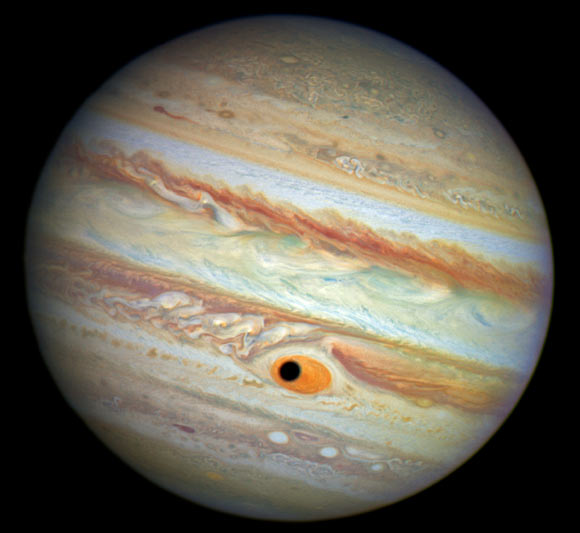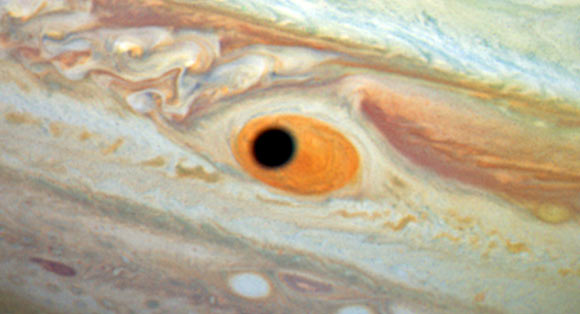In April 2014, astronomers using NASA’s Hubble Space Telescope obtained a remarkable new view of Jupiter as they tracked changes in the Great Red Spot, a long-lived storm the size of Earth on the Jupiter’s face.

This natural-color picture was taken with the Wide Field Camera 3 on board the Hubble Space Telescope. Image credit: NASA / ESA / A. Simon, Goddard Space Flight Center / C. Go / Hubble Heritage Team / STScI / AURA.
The Great Red Spot (GRS) is a giant, spinning anticyclonic storm in the atmosphere of Jupiter. It is like a hurricane on Earth, but it is much larger. Winds inside the storm reach speeds of about 435 km per hour.
Its rotation is counterclockwise, with a period of about 6 days. The clouds associated with the storm appear to be about 8 km above neighboring cloud tops.
Nobody knows when the GRS first appeared on Jupiter, but it has been seen on the planet ever since people started looking through telescopes about four centuries ago.
Presumably the persistence of the GRS is related to the fact that it never comes over land, as in the case of a hurricane on Earth, and that it is driven by Jupiter’s internal heat source.
Some scientists have suggested that such large disturbances may be stable on Jupiter, and that stronger disturbances tend to absorb weaker ones, which may explain the size of the storm.
The source of the red coloration is unknown; suggestions range from compounds of sulfur and phosphorus to organic material, any of which could be produced by lightning discharges or by high-altitude photochemical reactions.

This close-up view shows the Great Red Spot and the shadow of the Jovian moon Ganymede. Image credit: NASA / ESA / A. Simon, Goddard Space Flight Center / C. Go / Hubble Heritage Team / STScI / AURA.
The unusual image of Jupiter and its most conspicuous feature was captured on April 21, 2014, when the Hubble Space Telescope was being used to monitor changes in the GRS.
During the exposures, the shadow of Ganymede – the seventh and largest of Jupiter’s moons and also the largest moon in the Solar System – swept across the storm’s center.
“This gave Jupiter the uncanny appearance of having a pupil in the center of a 16,000-km-diameter eye,” the astronomers said.
“Momentarily, Jupiter took on the appearance of a Cyclops planet!”







